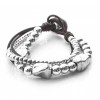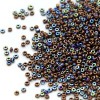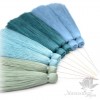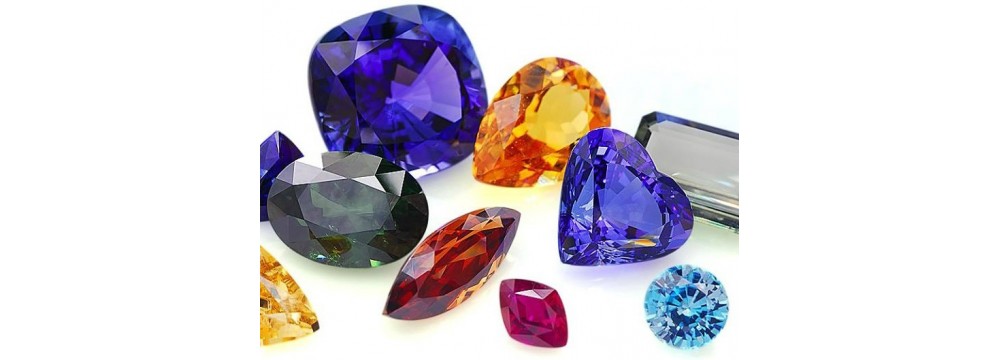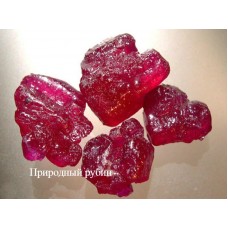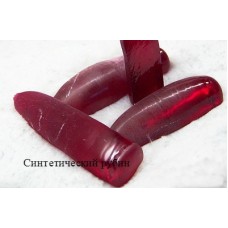Very often in online stores you will find so-called "NATURAL" stones from the precious section at a fairly low price. Friends, craftsmen and needlewomen! Don't be fooled! It is impossible to buy a natural, natural stone for, say, $5, $10, $15. Natural stones are much more expensive. And in our jewelry, at best, we use their no less beautiful synthetic counterparts. Therefore, think about it when you see the inscription "natural Swiss topaz - $ 10", and even crystal clear.... So...
To begin with, I would like to understand the concepts of "SYNTHETIC" or "HYDROTHERMAL" stone. These concepts are very often confused with a fake made of glass or plastic, thinking that since "synthetic" is indicated, this means, at best, painted glass. This is absolutely not true!!! Understanding the difference is not difficult, just read on, try to understand the content)
HYDROTHERMAL stone is a NATURAL analogue of genuine stone. Grown in the laboratory, it demonstrates all the properties of natural stone: color, brilliance, structure, hardness, transparency.
And a fake stone is just an imitation of a precious one, made, for example, of glass.
The synthesized analogue is a complete repetition of natural stone, although less valuable and cheaper. But no less beautiful!
The basis for the HYDROTHERMAL mineral is always natural raw materials. For example, in the production of synthetic emerald, small pieces of natural beryl are used. The seed is placed in a solution along with other components: aluminum and beryllium oxides, silica and chromium, and then sent to an autoclave, where the process of crystal development occurs under the influence of high pressure (700–1400 atmospheres) and temperature (up to 1000 °C). The chemical properties of hydrothermal stones and natural ones are identical, visually they are also very similar. The difference can only be seen when carefully examined under high magnification.
Hydrothermal rocks are often superior in quality to natural rocks: they are brighter and cleaner. That is why synthetic gemstones are recognized all over the world and are in great demand. In addition, the deposits of some stones are very limited, and therefore the cost of the mineral sometimes turns out to be sky-high. Cheaper and at the same time high-quality hydrothermal stones are increasingly used today in jewelry of an affordable price category, while not everyone can afford jewelry with natural minerals.
The production of synthetic EMERALDS, RUBIES, SAPPHIRES, CITRINES, AMETHYSTES, AMETRINES, ROCK CRYSTAL is widespread.
Hydrothermal COLORLESS ZWARTZ also has a complete match with its natural counterpart, both visually and in structure. Modern technologies make it possible to grow quite large quartz crystals, which at the same time retain their color and transparency, which is quite rare in natural conditions.
Here, for example, take RUBY. In one photo, a natural stone, and in the other, a synthetic one, grown in a laboratory from a small piece of natural ruby. They differ only in that natural stone, as a rule, will have impurities and extraneous inclusions. There are practically no pure stones in nature, and if they come across, they become property or a legend.
It takes millions of years to develop a precious stone in natural conditions, and in a laboratory a sufficiently large crystal can be grown in a few weeks. And thanks to the rapid development of science, today we have the opportunity to purchase an emerald, sapphire or ruby that is absolutely identical to natural in chemical composition, and not inferior in beauty, for significantly less money. By the way, in Germany, hydrothermal emeralds are respectfully called "cultural".
Of course, "craftsmen" have also learned to fake synthetic stones, passing off cheaper types as more expensive ones. But this, unfortunately, can only be determined by a qualified specialist. It remains for us to hope for luck and, having at least this knowledge, not to make gross mistakes.
In our store you can find synthetic (hydrothermal) stones from India, which is one of the world leaders in the extraction and processing of stones. Now you understand that such stones are natural and sufficient funds and equipment have been spent on their production, which fully justifies their price.
I would also like to note that this entire article DOES NOT APPLY TO TOPAZ . These stones are a completely different story. We only note that it is IMPOSSIBLE to buy synthetic topaz, thinking that it will be cheaper than natural. This is wrong! Synthetic topaz is much more expensive. Do not fall for the tricks of scammers or just ignorant people)
Pleasant creativity to everyone and successful hunting for pebbles for your jewelry.


